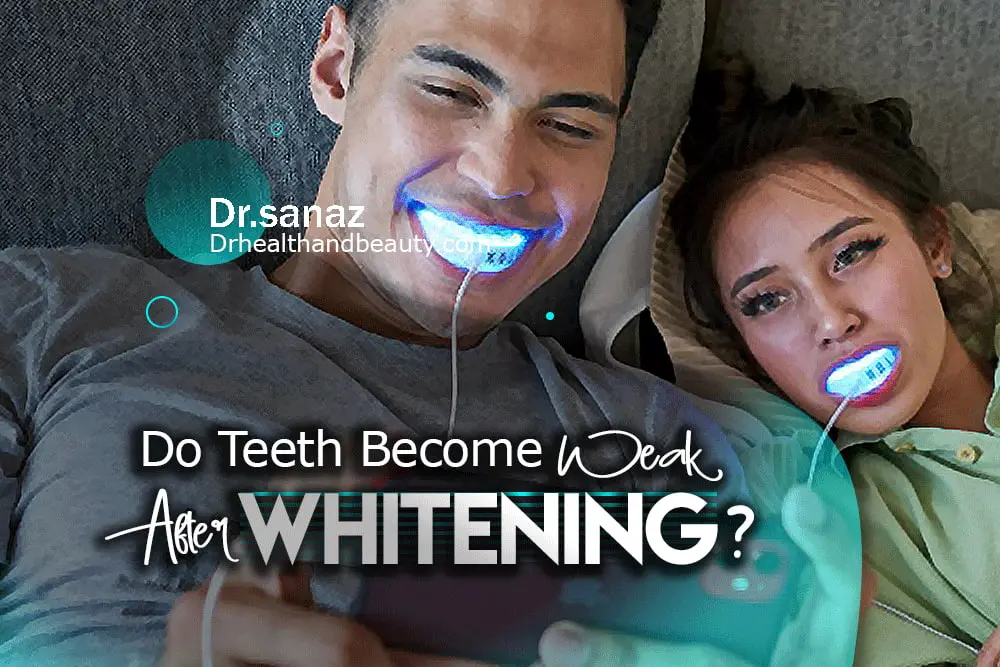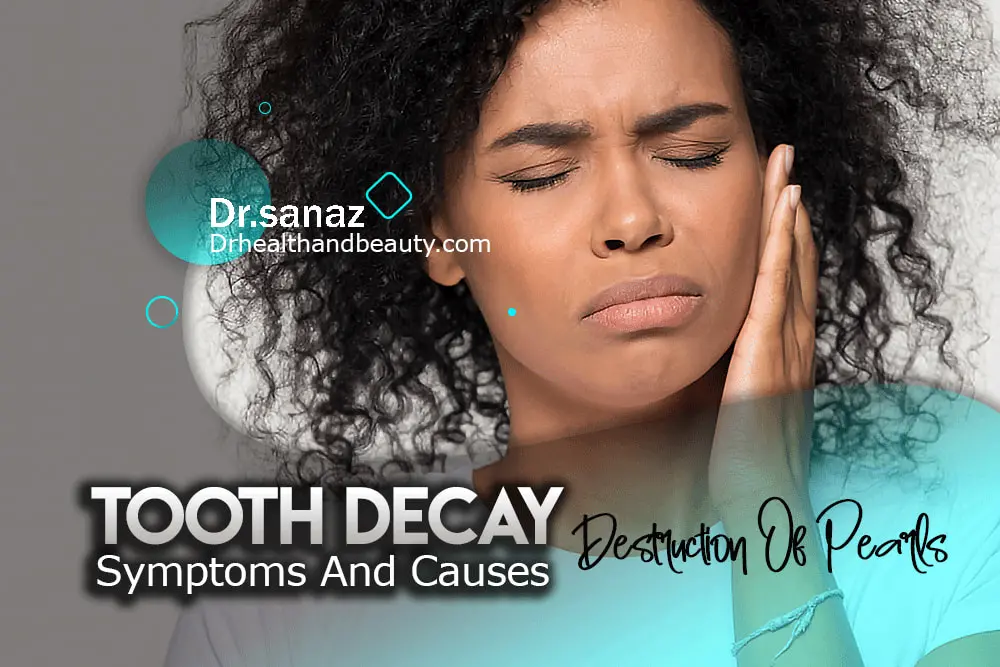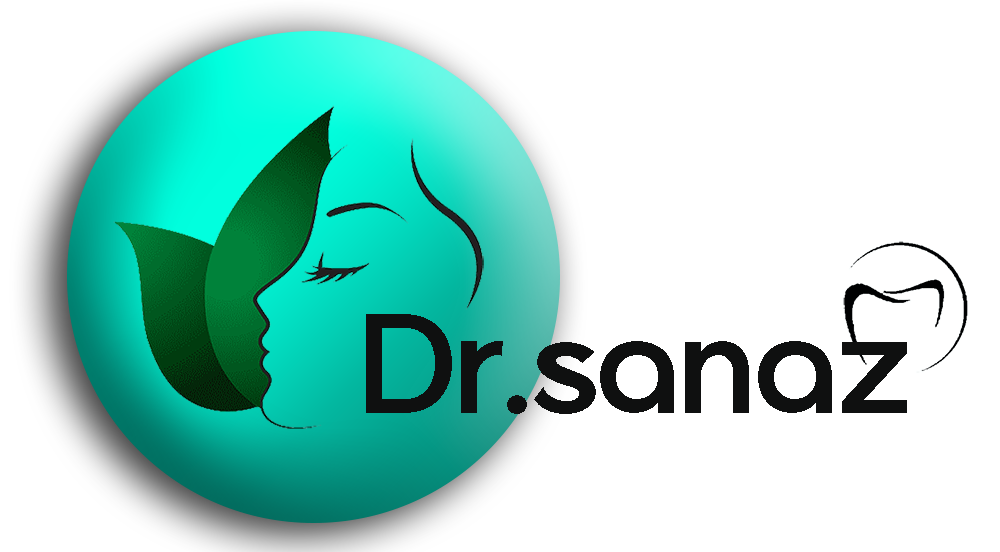

Tooth Decay ( Destruction Of Pearls ) Symptoms And Causes
The content of this article is approved by “drhealthandbeauty” experts.
Note: This article is only to guide and increase your knowledge. Before taking any action, you can consult “drhealthandbeauty” doctors or your doctor for treatment.
Smiles are windows to our souls, but what happens when the protective fortress of those smiles begins to crumble? Enter the realm of tooth decay, an insidious enemy that silently works its way through tooth enamel, leaving behind a trail of discomfort and pain.
In this exploration of dental health, we embark on a journey to uncover the symptoms, causes, and mysteries of tooth decay—a story that goes beyond routine dental exams to the foundation of our oral health.
Think of this article as your trusty map that guides you through the landscape of enamel erosion and dental problems.
Together, we’ll decipher the coded language of your teeth and learn to read the subtle warnings they may be sending. So grab your protective weapon—or rather, your toothbrush—as we try to uncover the secrets of tooth decay, armed with the knowledge and commitment to keep those bright smiles.
From the microscopic battlefield in your tooth enamel to the external forces conspiring against your pearly whites, join us as we explore the complex dance between symptoms, causes, and the relentless quest for a cavity-free existence. It’s time to decipher the language of your teeth and claim the throne of your oral kingdom.
Related: “Which Treatment Is Best For A Tooth Cavity?“
Let the journey begin.
Table of Contents
Exploring the concept of tooth decay
Your mouth is a balanced and dynamic ecosystem full of living bacteria (both good and bad). Most of the bacteria in your mouth are beneficial and good for your mouth and teeth. But some of them are saboteurs.
These destructive bacteria break down food’s sugars and carbohydrates in and turn them into acids that destroy tooth enamel and cause tooth decay.
Tooth decay is one of the most common healissuessues in the world. Decayed teeth actually result from a series of cavities in the tooth that finally create holes or pores on the surface of the tooth. This problem can occur in all people and at any age, even children and minors teeth, and affects the health of their teeth.
Caries is a dental condition and disease that is common at any age. In this problem, the surface and protective tissues of the tooth, which include enamel and dentin, suffer wear, decay, and corrosion. In fact, in this disease, tooth enamel, which is the hard tissue of the tooth, loses its minerals (phosphorus and calcium) due to the secretion of corrosive acids and gradually disappears.
When the minerals of the tooth enamel are lost and not treated, cavities and decay in the tooth occur over time. If the tooth decay is not treated in time, it will get bigger and bigger and may even reach the point where the entire tooth is lost. Caries are an infectious and transmissible illness; in fact, this means that caries can be transferred from one tooth to another.
Tooth decay can cause pain and infection. In fact, tooth decay begins from the early stages and gradually progresses due to lack of cure and non-observance of oral and dental hygiene principles, impacting the deeper layers of the teeth.
This problem can lead to severe dental pain, infection, and, eventually, tooth loss. Regular visits to the dentist and regular and accurate brushing and flossing habits can save people from tooth decay.
Types of tooth decay classes
Tooth decay can be categorized by class or stage of decay. These steps include the following:
Class one: externally visible decay
This stage indicates the level of tooth decay that happens on the tooth surfaces and can be easily observed by the dentist. This category contains cavities on the chewing surfaces of the back teeth, including molars and premolars (small molars), and decay on each side of the front teeth.
Class two: invisible surface decay
At this stage, cavities are created on the surfaces of molars and premolars and are not visible to the human eye.
Class three: interdental caries
This decay occurs on the surfaces among the front teeth but does not spread to the cutting edges of the teeth. Like the second stage, decay is not visible in this classification.
Class four: caries up to the edge of the teeth
This class of decay also occurs on the surfaces among the front teeth, but it also has an impact on the cutting edges of the teeth.
Class five: caries up to the gum line
At this stage, cavities appear in front or behind the front or back teeth, near the gum line.
Class 6: Major dental caries
This class of decay usually occurs on the upper area of the teeth, even on the incisal edges (4 upper and lower frontal teeth) and on the tips of the posterior teeth.
Causes of tooth decay
The main culprit of caries is the activity and infection of some bacteria, especially Streptococcus mutans.
These bacteria produce acid by feeding on sugar and foods that have a high concentration of sugar. This acid decreases the pH of the mouth and melts the tooth enamel and dentine, resulting in tooth decay over time. However, there are factors that intensify the activity or nutrition of these bacteria. These factors include:
Improper diet and high use of sugary substances that produce acid.
- Poor oral hygiene
- Not getting enough fluoride
- Lack of saliva
- Having diseases such as diabetes
- smoking
- Susceptibility of the tooth surface and its low resistance to acid
- Creating microbial plaques on the tooth surface
In fact, the process of caries is like this: first, a dental plaque, which is a sticky and transparent layer, covers the teeth. This is usually caused by high consumption of sugar and starches and not eliminating them.
In the future, oral and dental bacteria will feed on these plaques, and they gradually harden on the teeth and turn into mass. The acids in these plaques occasionally destroy the hard and outer tooth enamel, and this erosion will lead to pores or small holes in the tooth enamel.
Usually, the location of the tooth is one of the most effective factors in the cause of tooth decay. Caries often happen in people’s back teeth, especially molars and wisdom teeth. These teeth have grooves, cavities, cracks, and numerous roots that can collect food particles.
Decay is more common in the back teeth because it can be difficult to access them and keep them clean, especially in wisdom teeth.
It is true that tooth decay is more common in back teeth, but front teeth can also suffer from decay. If the front teeth are damaged, the same signs of pain, tooth sensitivity, and the appearance of spots and decay are seen on the teeth.
However, there is a severe problem regarding the decay of these teeth, and that is the very unfavorable effect that decayed front teeth have on people’s appearance and smile.
Therefore, the treatments needed to repair the decay of the front teeth are very important, and this disorder must be repaired instantly. If the front teeth are decayed, it will have a negative effect on reducing people’s self-confidence.
How do we know that our teeth are decaying?
Tooth decay has certain symptoms, and you are probably familiar with them. Some of the symptoms of tooth decay are clear at the beginning of the decay and are easy to recognize. But others show themselves with the progress of decay and later. The most important symptoms of this problem are:
- Toothache that can be continuous or bother you from time to time
- Tooth sensitivity is due to the erosion of tooth enamel and the exposure of the lower layer of the tooth (dentin), which aggravates the toothache.
- Creating gray, brown, and black spots with other dark colors
- Bad Breath
- Unpleasant and unpleasant taste in the mouth
- Creating small and large holes and holes in the surface or depth of the tooth
- The presence of infection in the gum tissue or soft tissue inside the root of the tooth can manifest itself as a tooth abscess and cyst.
- Mild or severe pains when eating hot and cold foods and drinks
It is not always possible to detect tooth decay at home
The above signs and symptoms facilitate the diagnosis of tooth decay at home, but in the early stages, it may be difficult for us to recognize this problem at home. This is why we should visit a dentist every 6 months for a dental checkup to detect superficial and very minor caries that cannot be seen by us.
—–
Where are the common places of tooth decay?
Tooth decay does not decay the entire surface of the tooth equally. Some parts of the teeth are more exposed due to their special conditions.
Surface grooves
The chewing level of the teeth, especially the molars, provides a suitable place for the growth and life of microbes due to having narrow and deep grooves, and the teeth decay from this area.
Interdental surfaces
The surfaces between the teeth are susceptible to decay and other gum diseases because the toothbrush cannot clean it. In this type, which is more common in smokers, dry mouth is one of its accelerating symptoms.
The collar of the tooth or the area where the gum connects to the tooth
This area of the tooth is a suitable place for the growth of microbes and, therefore, causes decay and gum diseases in this area.
In every person’s mouth, there is a set of defense factors that resist diseases, including tooth decay. Various factors such as age, the amount of saliva and the cells in it, the form and shape of the teeth, the position of the teeth, and their gender have a large effect on the rate of tooth decay.
In addition, some people are more resistant to harmful factors due to hereditary, congenital, or even acquired reasons.
In any case, various factors are involved in causing tooth decay, sugary substances and microbes being the two main factors. One of the ways to increase the resistance of teeth to caries is to add fluoride to the teeth. Fluoride increases the resistance of teeth to caries.
—-
When should you visit a dentist to treat tooth decay?
Usually, people are not aware of cavities in their teeth. For this reason, it is important to take regular examinations seriously; even when there is no problem with the teeth, going to the dentist and doing a checkup is very effective.
However, if you have toothache or mouth and gum pain, it is better to visit your dentist as soon as possible. Especially if you see any of the common signs of tooth decay, you should go to the dentist as soon as possible, get advice from the doctor, and be seen as soon as possible.
Conclusion
Tooth decay is a gateway for the infection to enter the pulp, and the longer it is left untreated, the more it spreads. In the very rare cases when this infection gets into your bloodstream, it spreads throughout the body and can have fatal consequences. So do not be indifferent to the treatment of tooth decay, and do not postpone the treatment.
Also, remember to brush your teeth immediately after eating, especially sweet foods and drinks. The longer you brush your teeth, the more decay your teeth are exposed to. Also, don’t forget to take vitamins D and B12.

